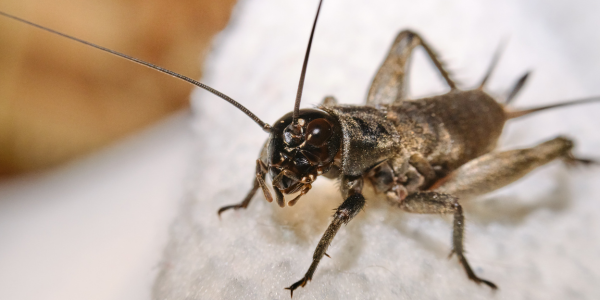
Cricket pests can be a significant nuisance in homes, causing damage to clothing, carpets, and other household items. These pesky insects thrive in warm, moist environments and can be difficult to eliminate once they’ve infested a home. While some people explore unconventional remedies for pest control, most effective methods involve a combination of good housekeeping, sealing entry points, and using targeted treatments.
In this article, we’ll explore some practical strategies at Green Mango Pest Control for getting rid of crickets in your home, from reducing moisture to using traps and repellents. By implementing these methods, you can keep your home cricket-free and prevent the damage these pests can cause.
Understanding Cricket Behavior
Before we dive into the control methods, it’s essential to understand cricket behavior. House crickets (Acheta domesticus) are attracted to warm, moist environments with plenty of food sources. They are omnivores and feed on a wide range of materials, including clothing, paper, and food debris. Crickets are also nocturnal, which means they are most active at night.
Sealing Entry Points
One of the most effective ways to control cricket pests is to prevent them from entering the home in the first place. Crickets can squeeze through tiny openings, so it’s essential to seal all cracks and crevices around the home. Here are some areas to focus on:
- Windows and doors: Make sure windows and doors are properly sealed, and consider installing door sweeps or weatherstripping to prevent crickets from entering.
- Vents and chimneys: Install screens on vents and chimneys to prevent crickets from entering the home.
- Foundation cracks: Seal any cracks in the foundation or walls of the home using caulk or sealant.
Reducing Moisture
Crickets thrive in moist environments, so reducing moisture levels in the home can help deter them. Here are some ways to reduce moisture:
- Fix leaks: Fix any leaks or water damage in the home to prevent moisture buildup.
- Use a dehumidifier: Consider using a dehumidifier in areas of the home that are prone to moisture, such as basements or crawl spaces.
- Improve ventilation: Improve ventilation in the home by installing vents or fans to reduce moisture buildup.
Traps and Repellents
Traps and repellents can be effective in controlling cricket pests. Here are some options:
- Sticky traps: Sticky traps can be placed in areas where crickets are most active, such as near food sources or in dark corners.
- Insecticides: Insecticides can be used to kill crickets, but it’s essential to choose a product that is labeled for cricket control and follow the instructions carefully.
- Essential oils: Certain essential oils, such as peppermint or lemongrass, can repel crickets. Mix a few drops of the oil with water and spray it around the home.
Cleaning and Decluttering
Cleaning and decluttering can help reduce cricket populations by removing food sources and hiding places. Here are some tips:
- Clean up crumbs and spills: Regularly clean up crumbs and spills to reduce food sources for crickets.
- Declutter: Declutter areas of the home that are prone to cricket infestations, such as basements or attics.
- Store clothing and paper products properly: Store clothing and paper products in sealed containers or bins to prevent crickets from feeding on them.
Final Words
Controlling cricket pests in homes requires a combination of strategies that target the crickets’ food sources, habitats, and entry points into the home. By sealing entry points, reducing moisture, using traps and repellents, and cleaning and decluttering, homeowners can effectively control cricket populations and prevent damage to their homes. By following these tips, you can keep your home cricket-free and reduce the nuisance caused by these pests.
